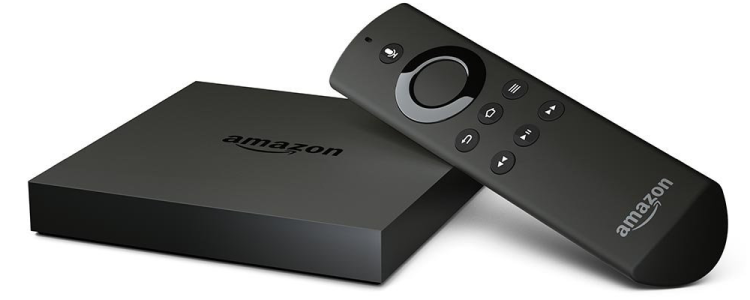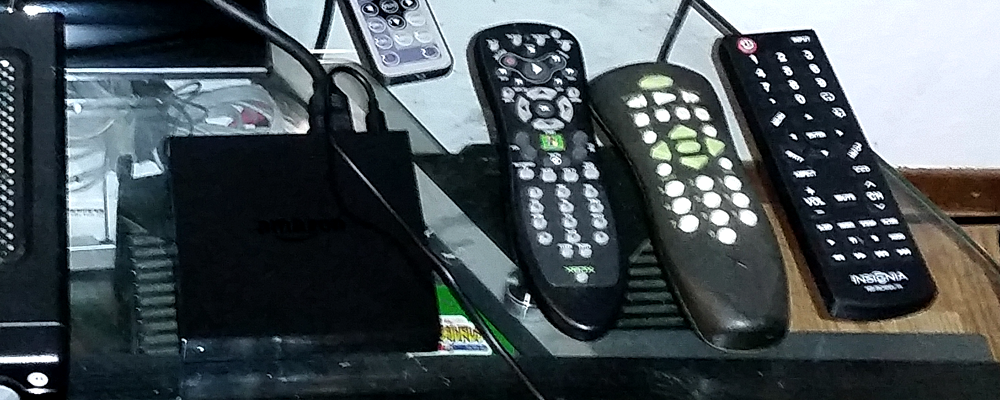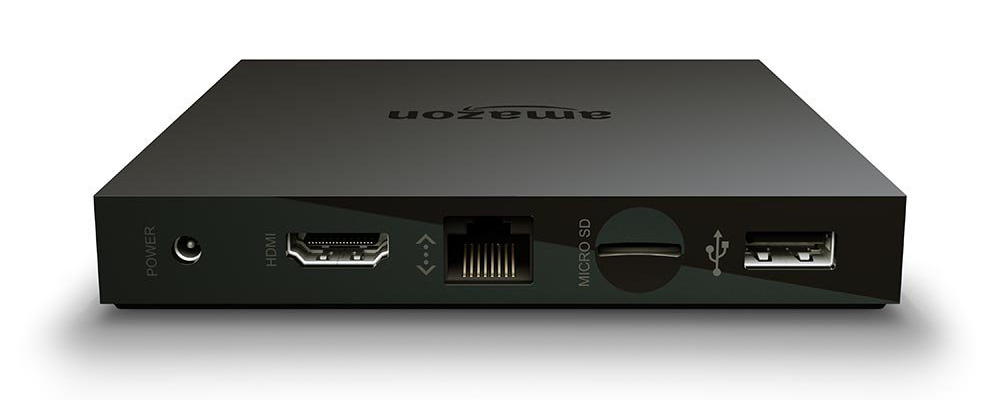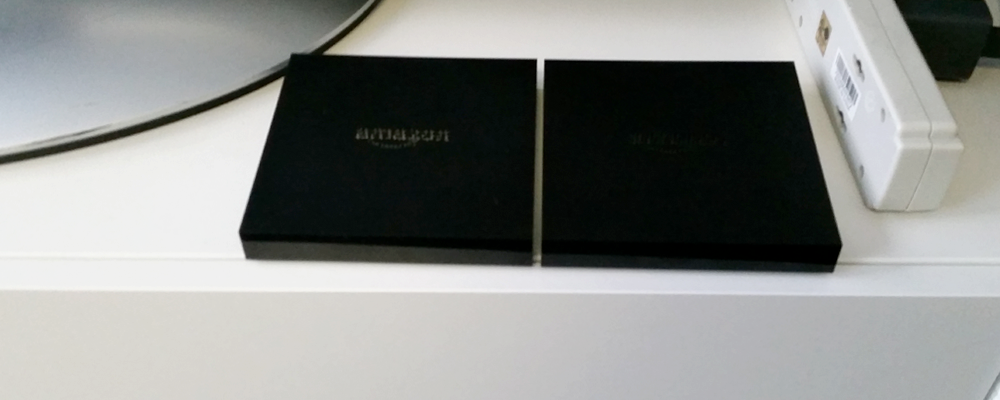The next contender in the end-of-the-year living room set-top battle royal has appeared, and it’s a tiny box hailing from Amazon. The product’s name? The Fire TV (available now, with the regular edition $100 and the gaming edition $140).
The online retailer has actually been pushing two Fire TV boxes for the past few years: the compact Fire TV Stick, which is a small HDMI dongle that acts much like a USB stick, and the more traditional set-top Fire TV. The older version of set-top box became unavailable for order on Amazon’s website a few months ago, and now we know the reason why: the roll-out of this new updated redesign.
Did Amazon take this opportunity to weaponize the Fire TV for the hotly contested living room fight? Let’s take a look.
Sizing it up
The Fire TV unit is so small and inconspicuous that I am in danger of losing it down whatever black hole TV remotes tend to fall into around entertainment centers. The various Blu-ray cases, video game controllers, and beer bottles that loiter around my television seem to physically bully its presence. If it wasn’t tethered to my TV, I’m convinced it would go missing the next morning.
If I were constructing a minimalist interior design for my living room, the squat black box is definitely the sort of thing I would go for (if I weren’t going for a Fire TV Stick). The Fire TV’s body language tells me that it isn’t here to bullshit around with sexy curves or metaphorical shapes. It’s a straight-edged, small black rectangle that’s asking me if I want to watch some gawd-damned television.
In the back, Fire TV sports an HDMI port, a MicroSD slot, an RJ45 port, a USB connection, and a power connector. It’s all business, almost too much so. What exactly are people with external audio systems supposed to do here? It has no optical-out port or — dare I require this in 2015 — generic RCA outputs. Sure, newer audio hardware uses USB and Bluetooth, but I also know many people like don’t swap audio equipment nearly as much as they do every other part of their entertainment hardware setup (or prefer our older speakers).
I can appreciate where this decision may be coming from. Perhaps Amazon thought trading size for audio functionality was a good compromise. In the long run, it’s a bad move, especially since it’s pushing the Fire TV as my primary entertainment content delivery system.
As for controlling the little black box, the Fire TV remote is as utilitarian in design as the main unit, but it’s curved and at least feels comfortable in my hand. It’s incredibly light, almost to the point of feeling like I could crush it with my gigantic paws. Seeing as I have to mail this review unit back to Amazon, I’ll pass on the stress test and won’t try to squeeze it to death.
The remote buttons seem responsive, with primary arrow selection keys being tied to a nondescript circle on the face and the center pad acting as the main OK button. The visual design suggests that I could turn and spin things, but I am not turning crap with this thing. It’s just how the buttons are laid out.
Putting in batteries is interesting, requiring cracking the unit in half in a way that makes me feel like I broke the thing. The process is a heart-jerking experience the first time around. Again, I have to return this thing to a company that employs drones. I’d rather they’d receive it in one piece.
Bring me the content!
Given who manufactures the Fire TV, this unit is obviously Amazon-centric in its content offerings, so much so that I’d say if you’re a big Amazon Prime user, you should be eyeballing this thing (and for all I know, a drone has already dropped it off for you). Just like every other set-top box, the usual cast of third-party TV and movie-content providers have shown up: Netflix, Hulu, HBO Go, etc.
Fire TV also features cross-platform content locating, allowing me to search for a specific movie or TV series and choose what source will be used. Amazon Prime, obviously, tends to be front and center of the list — but it’s not being totally obnoxious about it and pushing the service as the only option. It is an Amazon product after all, so who can blame them for bringing their content toward the front?
Apps are readily available, with games getting their own subsection of the menu. Level 256 and Crossy Road are obvious featured content here, as they are easily playable with the circular pad of the remote control, but supposedly the Fire TV will be able to handle more involved titles. The kind that require their own Amazon Bluetooth controller. We were told one of the two Fire TV units that showed up to the office was a gaming edition version, so I went in thinking it was going to at least have some games preloaded, but both units were exact clones of each other (game edition is supposed to come with a Bluetooth headset and a gamepad, which appears to be the only difference).
Then there is how the Fire TV talks back to me. Asana, Amazon’s voice avatar, performs much-appreciated chores like telling me what the weather is and pulling up some shows for me to watch. She tends to understand what I am saying, even when my mouth is crammed with snacks. The novelty of the voice command, like most other voice controls, does get old when I run out of places on Earth I’d like to receive a forecast on. Still, that’s not a fair criticism. I mean, if Asana were sentient and heard me complaining, it could easily tell my lazy ass to just type out “Aliens” myself the next time I want to watch Janette Goldstein shoot space bugs in the face. It’s still a hell of a luxury to yell at my devices and have them obey my commands.
Conclusion
If you’re an Amazon Prime faithful, you likely already chose the free 2-day shipping option when ordering this thing and have it waiting for you on the front porch. It obviously integrates well with Amazon’s content services. It also does a fairly good job of pointing out when something is on Netflix, Hulu, and Twitch. That alone is a badass feature, but it’s also become obligatory for these types of devices. I feel so spoiled saying that.
Here’s the thing. For someone like me who doesn’t have a Prime account and isn’t necessarily invested into the Amazon digital video marketplace, I feel I have other hardware options that are comparable to the Fire TV, that offer similar content delivery. Maybe the Fire TV would be a great excuse to pull the trigger and get an account?
I guess. But my consumer life is reaching content service saturation, and my wallet is telling me the budget can’t handle yet another provider’s monthly subscription fee.
Then there is Fire TV’s lack of audio options on the back end. Everyone in the set-top war needs to take this important note: Small is good, but options are, too If you want to dominate everyone’s entertainment center, your product needs to show a smidgen of adaptability in certain areas. When it comes to audio, give the consumer at least one traditional audio port.
The Amazon Fire TV is out now. The manufacturer provided VentureBeat with two test units for the purposes of this review.
VentureBeat's mission is to be a digital town square for technical decision-makers to gain knowledge about transformative enterprise technology and transact. Learn More




